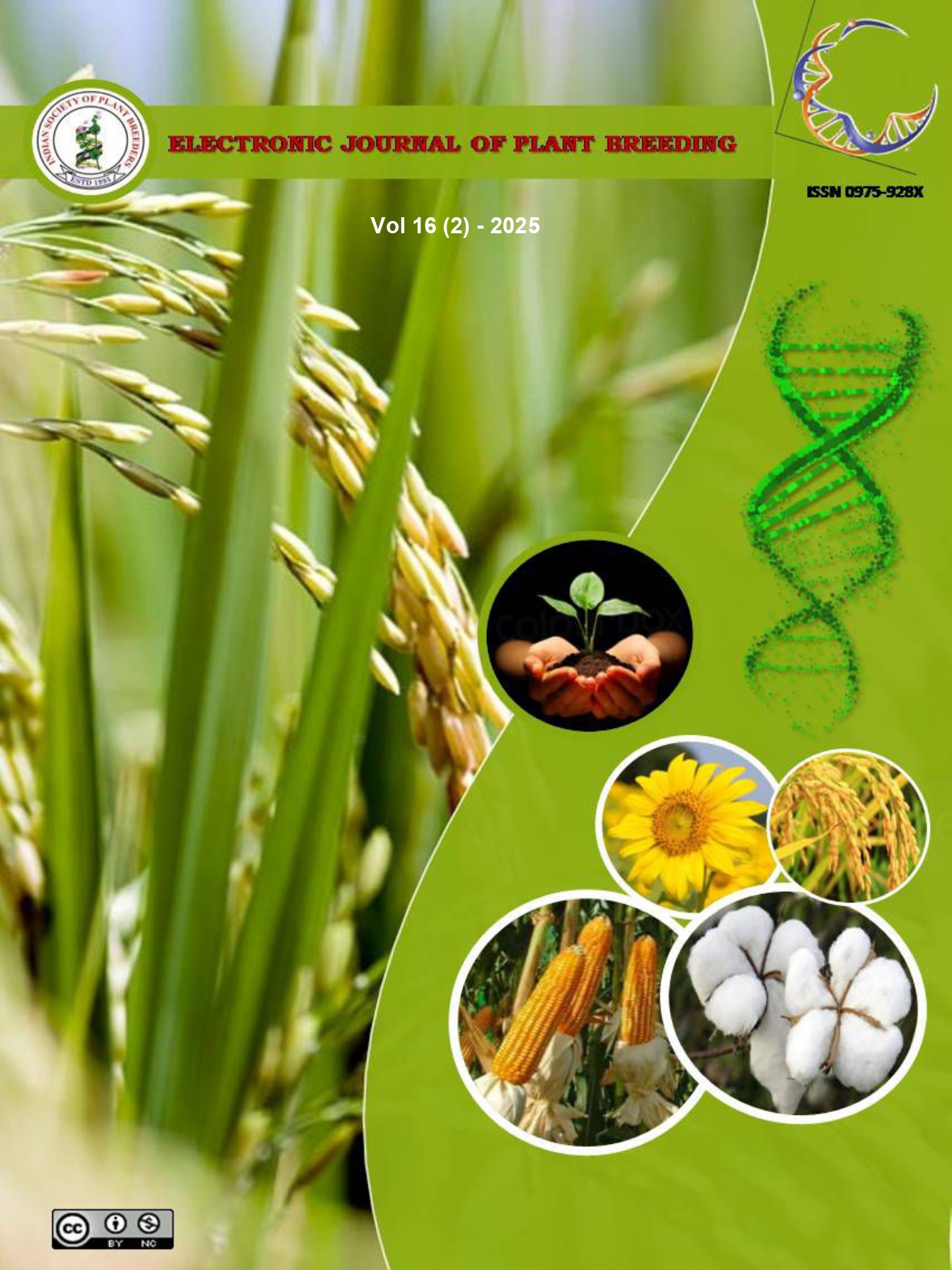Determination of breeding approaches for improvement of economic traits in Indian muskmelon (Cucumis melo L.) through assessment of gene action
Abstract
Muskmelon is an important cucurbitaceous vegetable due to its excellent taste, flavour, aroma and other quality traits present in its fruit. Architectural phenotypes of this crop have great potential to increase its fruit yield at the commercial level. Generation mean analysis was conducted in the year 2023 comprising five crosses of muskmelon (PMM-4A x Hara Madhu, PMM-4A x PMM-37, PMM-1 x Hara Madhu, PMM-32 x PMM-16, PMM-13 x PMM-16) derived from seven inbreds to study the gene action for implying correct breeding method to improve some important yield attributing traits. The results found in the present experiment suggest choosing specific breeding technique for a particular cross for improvement in a single character as both the type and intensity of gene action varied for a solitary trait in different crosses. Character-cross combination specified the role of simple additive gene for governing days to first female flower (Cross I and II) and total soluble solid content (Cross I, II, III and IV). Thus, simple pedigree method and selection in early generation could be adopted to improve these traits. Effect of dominance was observed in vine length (Cross-III) and number of fruits (Cross-II) where heterosis could be viable. Most of the cross combinations showed non allelic interaction in digenic level where duplicate epistasis was reported for all the traits like days to female flower (Cross III and IV), vine length (Cross I, II, IV and V), number of fruits per plant (Cross I and III), average fruit weight (Cross I,III, IV and V), fruit flesh thickness (Cross I, III,IV and V), fruit yield (Cross II and V) and TSS content (Cross V) indicating selection to be done in later generations at high intensity. Breeding methods like population improvement through biparental mating or recurrent selection would be effective to achieve sufficient improvement in these characters. On the contrary, the presence of complementary gene action in cross V for earliness, cross IV for number of fruits and cross II for fruit weight showed the significance of heterotic improvement.

